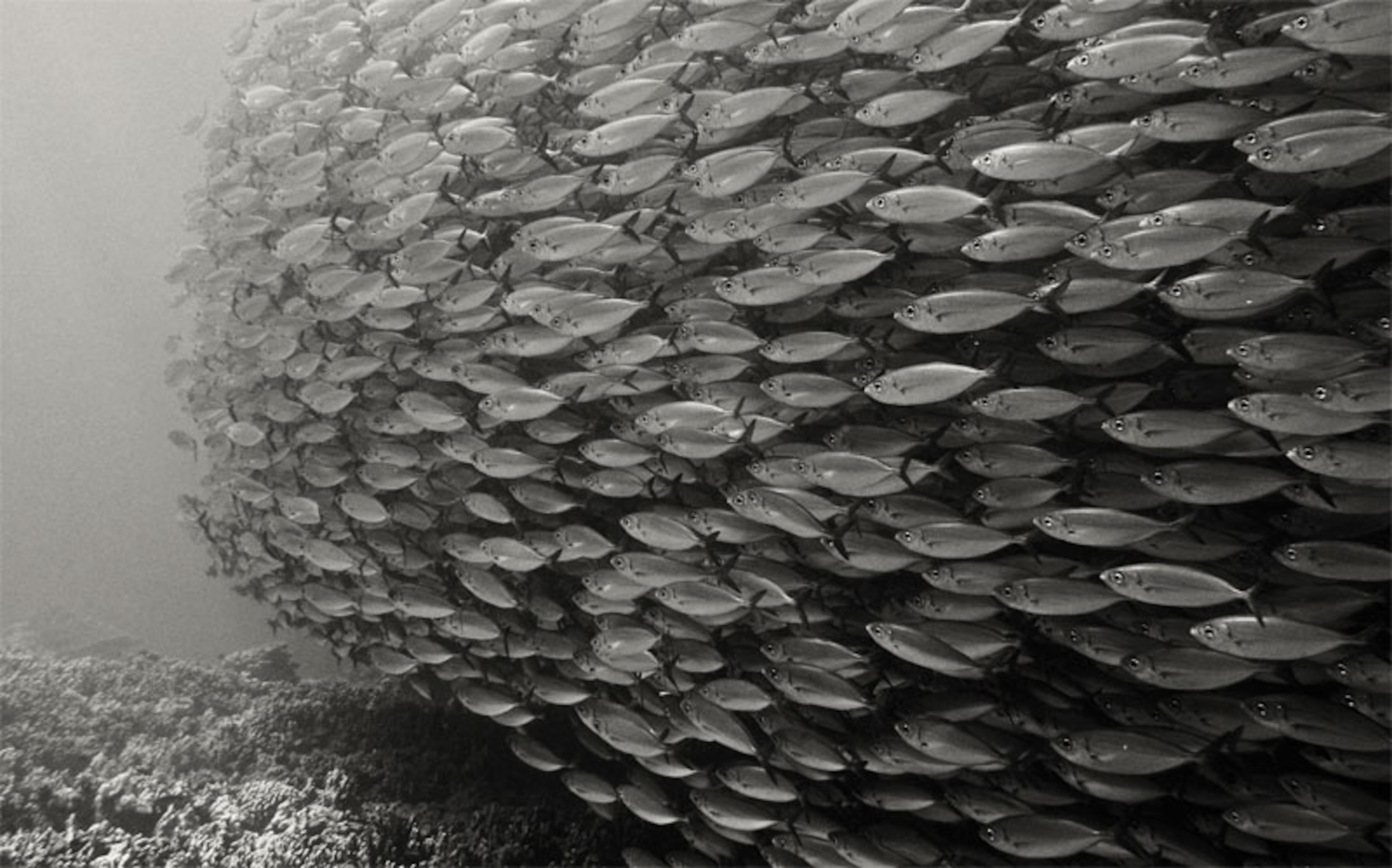
Heart of the Swarm – the Amazing Science of Shoals, Flocks, Hives and Brains
When Edmund Selous first saw a flock of starlings, he was both transfixed and baffled. The birds would ripple through the sky like a living sheet, thousands of them flying and turning as one. Their coordination was so precise that Selous, a serious biologist and a pioneer of bird-watching, could think of only one possible explanation—the starlings must be telepathic. After 30 years of observations, he published his ideas in 1931 in a book called “Thought Transference (Or What?) in Birds”.
The bit in the brackets is important.
No, starlings aren’t telepathic. Selous had fallen prey to a common assumption—that complicated behaviour must have an equally complex basis. Instead, we now know that complexity can arise from incredible simple rules. Flying birds can form coordinated flocks just by paying attention to how far away their closest neighbours are and what direction they’re flying in. Stupid fish can suddenly gain new powers of thought and calculation just by swimming in a shoal. Locusts can instigate a plague that devastates nations just by nipping each other in the legs.

We know this thanks to the burgeoning science of collectives—the study of birds, neurons, cells, wildebeest, ants, humans, and more. It is both the pinnacle of reductionism and its complete antithesis. It tells us that behaviour which seems impossibly complex can have disarmingly simple foundations. But it also reminds us that we will only perceive those foundations by looking at the whole instead of the parts.
In a big story published in the latest issue of Wired, I take a look at these swarms, and how they achieve their amazing feats of collective movement and even collective intelligence. The piece focuses on the work of Iain Couzin from Princeton University—he’s one of the most prominent disciples of the swarm, and someone whose work I’ve written about a lot on this blog. But I also look at the history of swarm science, how it differs from related (but more boring) concepts like the wisdom of crowds, and how it will develop in the future, through team-working robots and hacked crows.
I hope you enjoy it. Here’s a little teaser:
The first thing to hit Iain Couzin when he walked into the Oxford lab where he kept his locusts was the smell, like a stale barn full of old hay. The second, third, and fourth things to hit him were locusts. The insects frequently escaped their cages and careened into the faces of scientists and lab techs. The room was hot and humid, and the constant commotion of 20,000 bugs produced a miasma of aerosolized insect exoskeleton. Many of the staff had to wear respirators to avoid developing severe allergies. “It wasn’t the easiest place to do science,” Couzin says.
In the mid-2000s that lab was, however, one of the only places on earth to do the kind of science Couzin wanted. He didn’t care about locusts, per se—Couzin studies collective behavior. That’s swarms, flocks, schools, colonies … anywhere the actions of individuals turn into the behaviors of a group. Biologists had already teased apart the anatomy of locusts in detail, describing their transition from wingless green loners at birth to flying black-and-yellow adults. But you could dissect one after another and still never figure out why they blacken the sky in mile-wide plagues. Few people had looked at how locusts swarm since the 1960s—it was, frankly, too hard. So no one knew how a small, chaotic group of stupid insects turned into a cloud of millions, united in one purpose.
Couzin would put groups of up to 120 juveniles into a sombrero-shaped arena he called the locust accelerator, letting them walk in circles around the rim for eight hours a day while an overhead camera filmed their movements and software mapped their positions and orientations. He eventually saw what he was looking for: At a certain density, the bugs would shift to cohesive, aligned clusters. And at a second critical point, the clusters would become a single marching army. Haphazard milling became rank-and-file—a prelude to their transformation into black-and-yellow adults.
That’s what happens in nature, but no one had ever induced these shifts in the lab—at least not in animals. In 1995 a Hungarian physicist named Tamás Vicsek and his colleagues devised a model to explain group behavior with a simple—almost rudimentary—condition: Every individual moving at a constant velocity matches its direction to that of its neighbors within a certain radius. As this hypothetical collective becomes bigger, it flips from a disordered throng to an organized swarm, just like Couzin’s locusts. It’s a phase transition, like water turning to ice. The individuals have no plan. They obey no instructions. But with the right if-then rules, order emerges.
